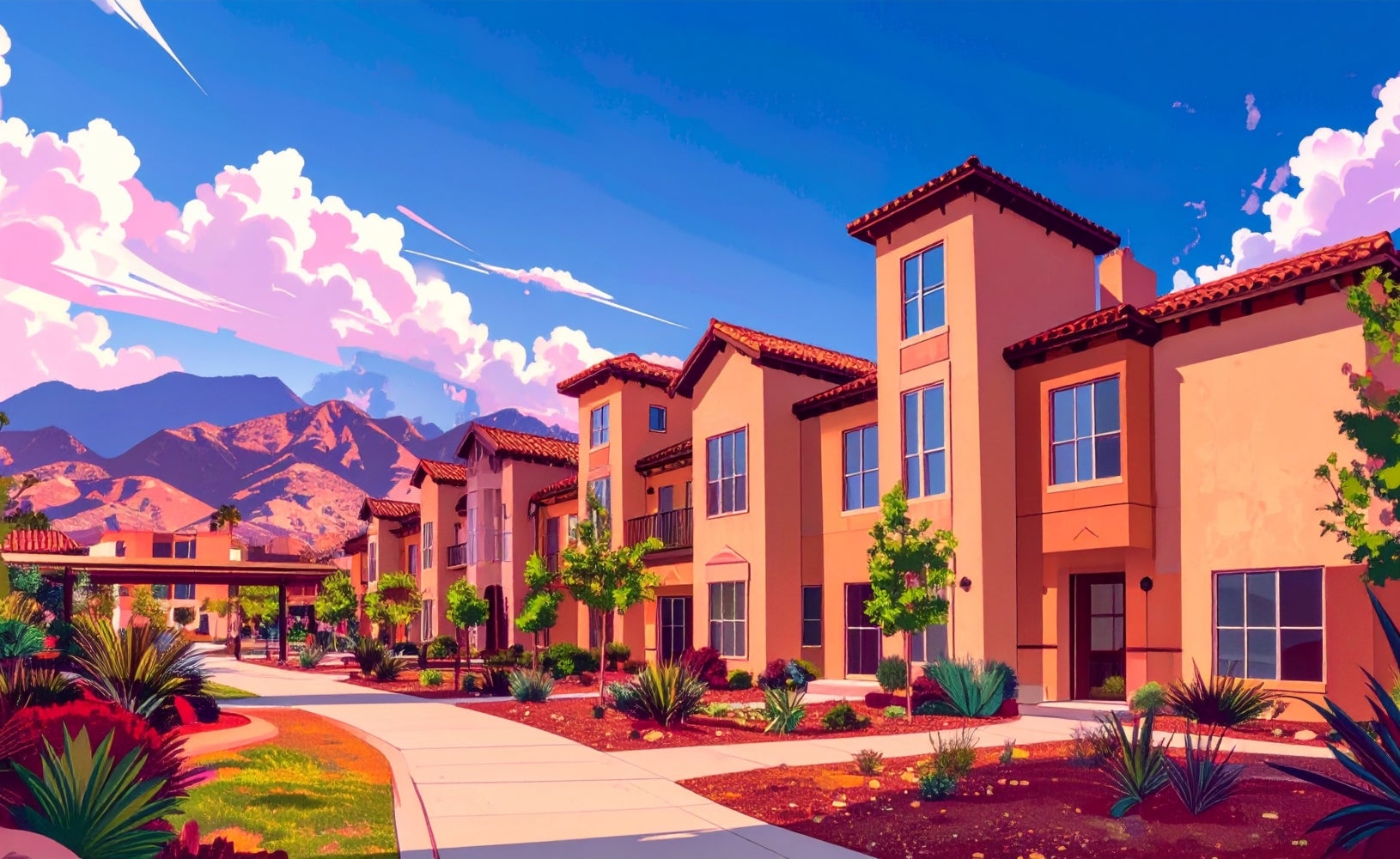Get Assistance
We’ve Got You Covered


We know compliance can be a lot, but we’re here to help. Here’s what’s available for you:
| Resource | What it is |
|---|---|
| California Go Green Financing – part of California Hub for Energy Efficiency Financing (CHEEF) | Eligible efficiency projects include: central air conditioning unit, central air conditioning system, heat pumps. |
| California Public Utilities Commission Electric Heat Pump Water Heat Program | To qualify for incentives, Heat Pump Water Heaters (HPWHs) must be set up to shift electricity use to off-peak hours and lower greenhouse gas emissions. This includes using a thermostatic mixing valve that stores heated water during low-demand periods. Participants must also join a demand response program, agreeing to reduce electricity use during heat waves or grid emergencies. |
| Golden State Rebates | Provides rebates to California residents for approved energy efficient cooling products (e.g. air conditioners and smart thermostats). |
| Inflation Reduction Act (IRA) Residential Energy Rebate Program | Two programs to support home energy retrofits: Home Efficiency Rebates (HOMES) to fund whole house energy efficiency retrofits and the Home Electrification and Appliance Rebates (HEEHRA) to help low-moderate income households “go electric” through qualified appliance rebates. Rebates may be available for the following types of building materials: insulation, air sealing, electric panel upgrades, and electric wiring. The rebates will align with state climate goals, which include installing 6 million electric heat pumps by 2030. Californians are expected to be able to apply in 2024. |
| Low-Income Weatherization Program (LIWP) | California’s LIWP provides low-income households with solar photovoltaic systems and energy efficiency upgrades at no cost to residents. LIWP also helps cushion the impact of climate change on vulnerable communities, making it more affordable for low-income households to keep their homes cool and comfortable at a lower cost – whether through energy efficient air conditioning or improved insulation – and protect children and seniors from the health impacts of higher temperatures. |
| IRS Residential Energy Efficiency Tax Credit | This credit applies to energy efficiency improvements in the building envelope of existing homes and for the purchase of high-efficiency heating, cooling and water heating equipment. |
| SoCalGas Multi- Family Residential Rebate Program | SoCalGas provides incentives to encourage the owners and managers of multi-family residential buildings to increase their energy efficiency. The program offers rebates for the installation of qualified energy-efficient products in apartment dwelling units and in the common areas of apartment and condominium complexes, and common areas of mobile home parks. Cooling solutions may be incorporated into part of this program. |
| SoCalREN Network Multifamily Program | Provides technical assistance to identify cost-effective energy upgrades to multi-family housing and connection to applicable incentive programs; and offers incentives on energy conservation measures such as heating, ventilation, and air conditioning (HVAC) upgrades. |
| Technology and Equipment for Clean Heating (TECH) | The TECH Initiative provides incentives directly to contractors to support the installation of heat pump technologies in existing single-family and multi-family properties. |
| U.S. Department of Housing and Urban Development (HUD) Energy Efficiency and Green Retrofit Program | Provides grants and loans for energy efficiency and green retrofit investments in multifamily properties. Three tiers: Element (max awards up to $750K, per unit cap $40k), Leading Edge Awards ($10M cap, $60k per unit), Comprehensive Awards ($20M cap, per unit cap $80k). Examples of eligible Elements investments include, but are not limited to, installation of electric HVAC heat pumps.
|
| Resource | What it is |
|---|---|
| SoCalREN | SoCalREN helps businesses, public agencies, and landlords tap into energy-saving programs that lower costs, boost efficiency, and support a more sustainable Southern California. |
| U.S. Department of Energy's (DOE) Weatherization Assistance Program (WAP) | The U.S. DOE WAP works with local energy services providers throughout the state installing weatherization and energy efficiency measures for low-income homeowners and renters that qualify under the DOE WAP. |
| U.S. Department of Health and Human Services' Low-Income Energy Assistance Program (LIHEAP) | The LIHEAP assists eligible low-income households with their heating and cooling energy costs, bill payment assistance, energy crisis assistance, weatherization and energy-related home repairs. Currently administered by community-based organizations in LA County. |
Sources: County of Los Angeles Public Health, Los Angeles Office of Climate Emergency Mobilization, LADWP

Unincorporated Los Angeles County has passed a new ordinance requiring rental units to maintain a maximum indoor temperature of no more than 82°F. For most landlords, this requirement will apply to all habitable rooms by January 1, 2027. If you are a small landlord—meaning you own 10 or fewer rental units total across all properties—you will need to meet the standard in at least one habitable room per unit by January 1, 2027, and in all habitable rooms by January 1, 2032, to comply with the ordinance.
Tenants are allowed to install their own portable cooling devices—such as plug-in air conditioners or fans—without being evicted, charged extra, or punished. Tenants must notify their landlord in writing, at least five days before installing the unit, so their landlord is aware of the additional electrical demand. Landlords may not pass along the cost of installing a portable cooling device to tenants, but they may be eligible for other capital improvements required to comply.
While the ordinance doesn’t require landlords to upgrade electrical systems, it’s strongly recommended that units be equipped to safely support standard cooling devices. Ensuring electrical systems are up to code and able to handle plug-in air conditioners or fans can help avoid safety issues and make compliance easier for everyone. Tenants can add a portable cooling device or utilize other non-mechanical cooling methods at their own cost, and landlords cannot raise the rent or charge extra fees under the new rule.
Hot days aren’t just uncomfortable. They can actually be dangerous. Heat waves are getting longer and happening more often, and spending too much time in high temperatures can make you really sick. While anyone can be affected, older adults, young children, pregnant people, outdoor workers, unhoused individuals, athletes, and people with chronic health conditions are most at risk.
Check out these helpful resources from the County of Los Angeles Department of Health.
Sign up online for LA County heat alerts.
Sources: County of Los Angeles Public Health, Los Angeles Office of Climate Emergency Mobilization, LADWP
Unincorporated Los Angeles County has passed a new ordinance requiring rental units to maintain a maximum indoor temperature of no more than 82°F. For most landlords, this requirement will apply to all habitable rooms by January 1, 2027. If you are a small landlord—meaning you own 10 or fewer rental units total across all properties—you will need to meet the standard in at least one habitable room per unit by January 1, 2027, and in all habitable rooms by January 1, 2032, to comply with the ordinance.
Tenants are allowed to install their own portable cooling devices—such as plug-in air conditioners or fans—without being evicted, charged extra, or punished. Tenants must notify their landlord in writing, at least five days before installing the unit, so their landlord is aware of the additional electrical demand. Landlords may not pass along the cost of installing a portable cooling device to tenants, but they may be eligible for other capital improvements required to comply.
While the ordinance doesn’t require landlords to upgrade electrical systems, it’s strongly recommended that units be equipped to safely support standard cooling devices. Ensuring electrical systems are up to code and able to handle plug-in air conditioners or fans can help avoid safety issues and make compliance easier for everyone. Tenants can add a portable cooling device or utilize other non-mechanical cooling methods at their own cost, and landlords cannot raise the rent or charge extra fees under the new rule.
Hot days aren’t just uncomfortable. They can actually be dangerous. Heat waves are getting longer and happening more often, and spending too much time in high temperatures can make you really sick. While anyone can be affected, older adults, young children, pregnant people, outdoor workers, unhoused individuals, athletes, and people with chronic health conditions are most at risk.
Check out these helpful resources from the County of Los Angeles Department of Health.
Sign up online for LA County heat alerts.
Sources: County of Los Angeles Public Health, Los Angeles Office of Climate Emergency Mobilization, LADWP